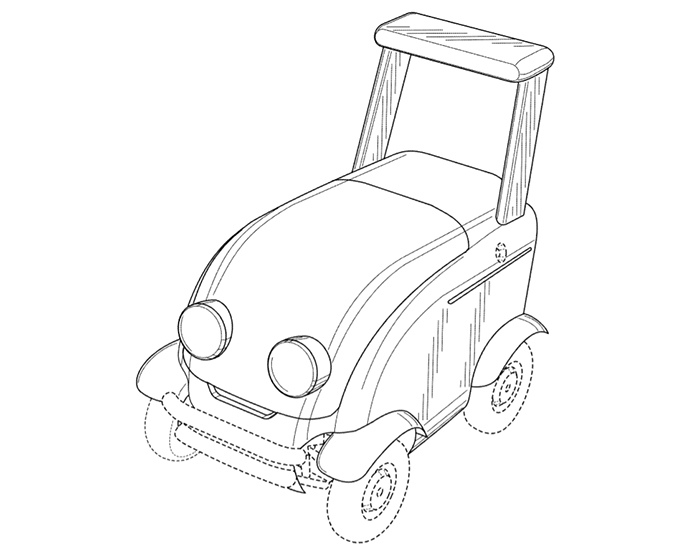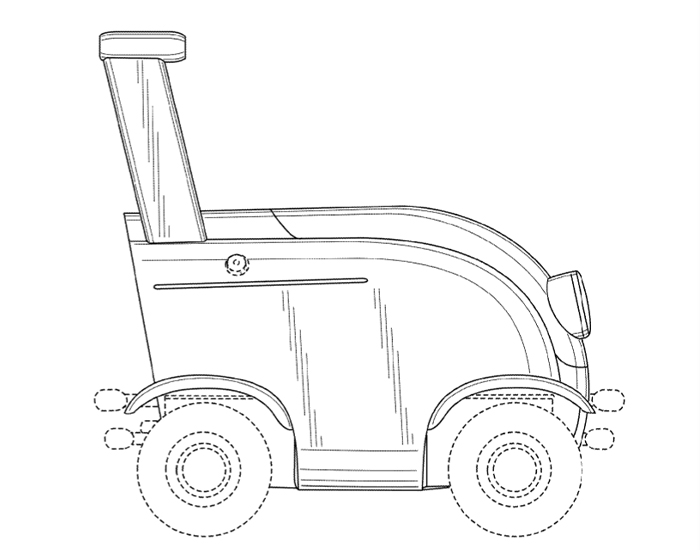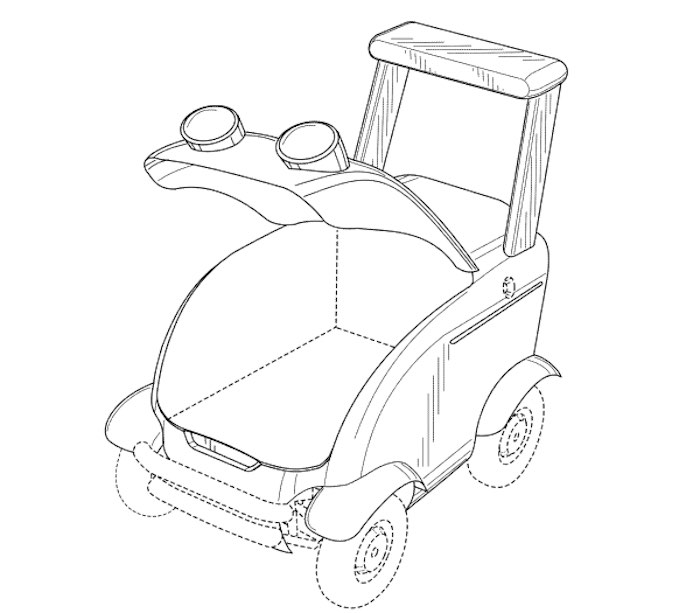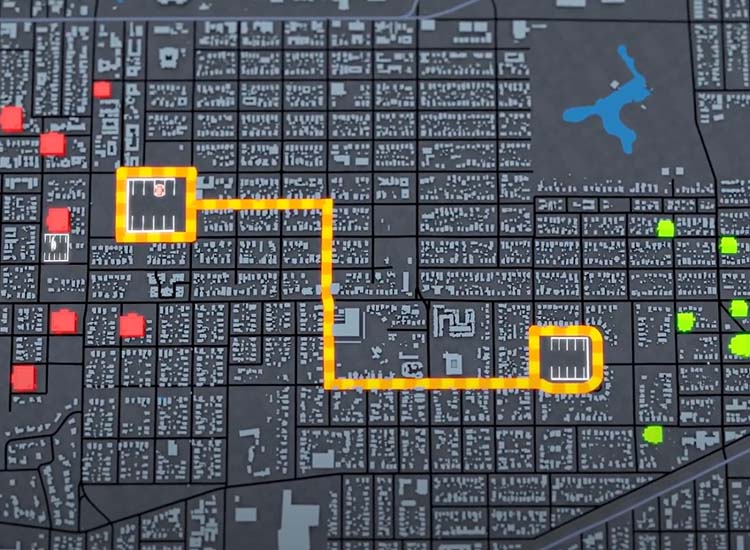|
Listen to this article  |

A drawing from Doordash’s patent filing for a delivery robot. | Credit: Doordash/USPTO
Last week, Doordash introduced Doordash Labs, its robotics and automation division that’s been operating since 2018. Doordash has tested last-mile delivery with a number of robotics companies since 2017, including Cruise, Marble and Starship Technologies. However, none of those solutions seem to have stuck for Doordash.
The food delivery giant appears to be developing its own autonomous delivery robots.
Doordash hasn’t publicly revealed any details about its delivery robots, but it has filed several relevant patents with the United States Patent and Trademark Office. In May 2019, it filed two patents for an autonomous delivery vehicle. The patents were approved in September and October of 2021 and include diagrams of an autonomous delivery robot.
Doordash told The Robot Report that patents aren’t necessarily indicators of what’s actually under development. While the robots Doordash eventually publicly reveals could look and work differently, the patents and diagrams at least give us a glimpse of what Doordash has in mind.
“DoorDash Labs’ goal is to develop and implement robotics solutions that complement the Dasher community, increase efficiency in our overall network, and result in a more efficient, improved experience for all audiences DoorDash serves,” a Doordash spokesperson said in an emailed statement. “We are committed to working closely with safety experts and regulatory stakeholders to implement best practices as we explore the in-house development of automation technologies.”

This drawing shows a side view of what Doordash’s delivery robot could look like. | Doordash/USPTO
The patents don’t reveal too much about the specs of the robot. In one patent, Doordash describes an autonomous vehicle that could carry two to three 22-inch pizza boxes. Doordash uses the words “various embodiments,” meaning the size and storage capacities could differ going forward. According to the patent, the vehicle could navigate pedestrian pathways, sidewalks, bike lanes and roadways in residential areas. The vehicle could reach speeds between 18-25 mph and weigh between 200-300 lb.
In one patent, Doordash said its robot could have a sensor that extends upward from the body of the robot at a height of 3-5 ft. Doordash has filed patents for various other components for an autonomous delivery vehicle, including a virtual vehicle control system and a sensor stack for an automated delivery vehicle.
For comparison, delivery robots from Starship are 22.5 inches tall, weigh 55 lb. and can carry up to 30 lbs. Nuro’s R2 delivery vehicle is much larger than Starship’s robots, offering payload capacity of 419 lbs and maximum speed of 25 MPH.

A drawing of Doordash’s delivery robot with an open storage compartment. | Credit: Doordash/USPTO
Doordash also hired Ashu Rege as Doordash Labs’ new vice president of autonomy. Rege spent six years at Zoox, an autonomous vehicle company. At Zoox, Rege spent three years as the senior vice president of software engineering. Zoox was founded in 2014, and acquired by Amazon in 2020 for $1.2 billion.
In its announcement of Doordash Labs, Doordash said it “identified a gap in existing automation applications,” and it’s looking to fill that gap with its own technology. Doordash said it is looking for a solution that’s built to scale and is fully integrated with its system.
Many autonomous delivery robots use a last-mile delivery system, where the robot picks up the order from a location between the merchant and customer, and then delivers the food to the customer. Doordash is looking to automate the middle mile of its deliveries using a hub-to-hub model. In this model, orders would be aggregated in areas with many merchants, like a shopping mall, and the robot would carry the order to a hub closer to customers. A human “Dasher” could then pick up orders from the hub and bring them to the customer.

In Doordash’s hub-to-hub model, a robot would move between merchant and consumer hubs with deliveries.
No stranger to robotics
Doordash is no stranger to delivery robots or autonomous vehicles. It’s been testing various robots since 2017, when it first partnered with Starship Technologies. Later in 2017, Doordash partnered with Marble Robot, to begin testing robot deliveries in San Francisco. Most recently, in 2019, Doordash partnered with Cruise to test its autonomous cars’ ability to deliver orders in San Francisco.
In August of 2019, Doordash acquired Scotty Labs, a tele-operations company working on technology that would allow people to remotely control self-driving vehicles.
In February 2021, it acquired Chowbotics, a company that created a robot that assembled custom bowls on-demand in an airtight, refrigerated container. Doordash said it has been expanding its robotics team with strategic acquisitions, like Chowbotics.
Doordash Labs is looking to hire autonomy engineers, robotics technicians and software engineers for autonomy platforms. All signs seem to point towards Doordash rolling out its own autonomous delivery robots.
Credit: Source link


Comments are closed.